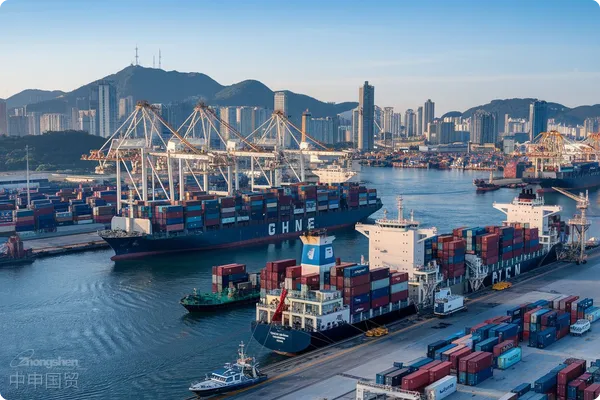- Shanghai Zhongshen International Trade Co., Ltd. - Two decades of trade agency expertise.
- Service Hotline: 139 1787 2118

Contents
TogglePractical Operation Guide for Import Equipment Agency Agreement
Against the backdrop of global supply chain restructuring in 2025,Equipment ImportsEnterprises choosing professionalforeign tradeAgency has become a key factor in ensuring the smooth implementation of projects. This article analyzes the core elements of agency agreements from a practical operational perspective, helping enterprises establish efficient cooperation mechanisms.
I. Analysis of Core Agreement Clauses
The professional agency agreement should include the following essential modules:
- Scope of Work Definition: Clarify the HS code of the equipment,It is recommended to verify through the following methods:Explicit requirements, special regulatory conditions
- Fee structure clause: Distinguish between basic service fees and incidental charges (such as demurrage fees and inspection surcharges).
- Liability Allocation Mechanism: Define the transfer point of goods ownership and the party responsible for transportation risks
- Quality Acceptance Standards: Agreed upon goods inspection procedures and claim time limits
- Dispute Resolution Clause: It is recommended to choose the China International Economic and Trade Arbitration Commission (CIETAC).
II. Key Indicators for Agency Selection
- Qualification Verification:
- AEO (Authorized Economic Operator) Advanced Certification qualification from customs
- Import License for Specific Equipment (e.g.Medical EquipmentRegistration certificates)
- Industry experience: Investigate import cases of similar equipment (at least 3 successful operation cases).
- Service network: Overseas customs clearance partners cover the country of origin of the equipment.
- Emergency Response Capability: Rapid Response Plan for Inspection Rates Exceeding 30%
- Information technology level: Real-time tracking system's capability to interface with the Customs Single Window
III. Recommendations for Optimizing the Agreement Signing Process
A precision instrument import company saved 15% of operational costs by standardizing processes:
- Requirements Analysis Phase: Confirm equipment technical parameters and regulatory requirements
- Scheme Comparison Phase: Obtain solutions from at least three agents.
- Negotiation phase of the terms: Focus on negotiating the sharing ratio of demurrage fees and the method of tax guarantee.
- Legal review stage: Verify the compliance of intellectual property security clauses.
- Agreement execution phase: Establish a monthly reconciliation and exception notification mechanism.
IV. Key Points of Risk Prevention and Control
- Risk of customs clearance delay: Request the agent to provide a pre-classification recommendation letter.
- Tax dispute risk: Clarify the responsible party for royalty fee declaration
- Quality dispute risk: Agreed standards for Pre-Shipment Inspection (PSI) execution
- Exchange rate fluctuation risk: Adopt a phased payment and hedging combination plan
- Force Majeure Clause: Refine the handling procedures for special circumstances such as wars and strikes.
5. Industry Development Trends in 2025
According to the latest customs data, equipment imports exhibit the following characteristics:
- Under the trend of supply chain nearshoring, the proportion of equipment imports from Southeast Asia has increased to 28%.
- The range of equipment categories eligible for preferential tariff rates under RCEP has been expanded to 92 categories.
- Customs AEO certification standards now include additional data security compliance requirements.
- The intelligent image review technology reduces the inspection time to 1.8 hours per document.
Professional agency services are moving towardsSupply chain financeandLocalized serviceDirection upgrade: It is recommended that enterprises reserve service upgrade interfaces in agreements, especially for new service demands such as VAT credit refund processing related to equipment after-sales services.
Related Recommendations
? 2025. All Rights Reserved. Shanghai ICP No. 2023007705-2  PSB Record: Shanghai No.31011502009912
PSB Record: Shanghai No.31011502009912










